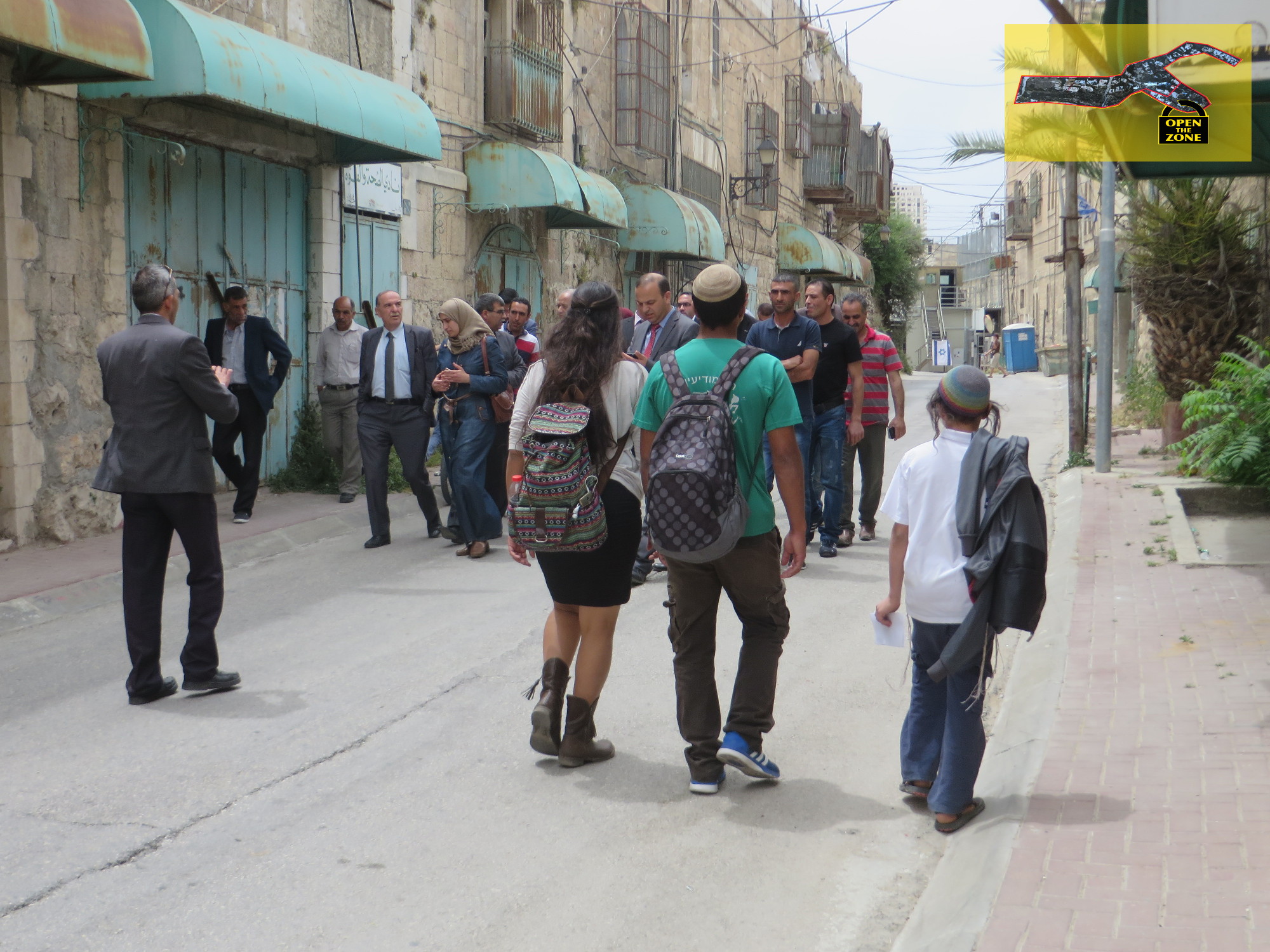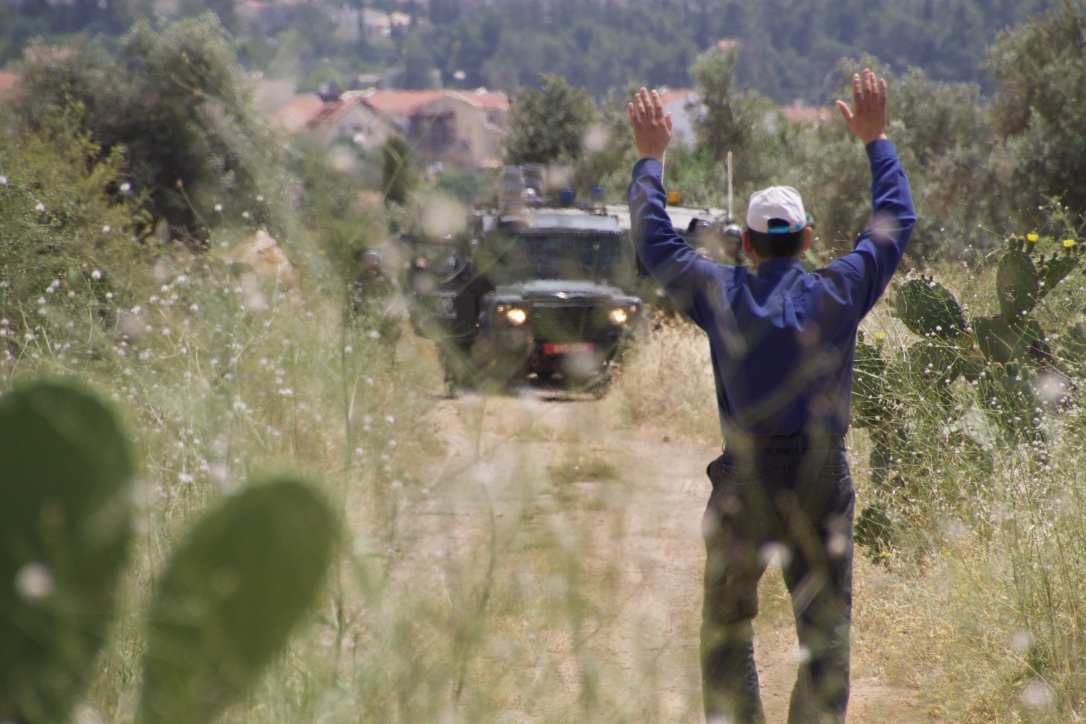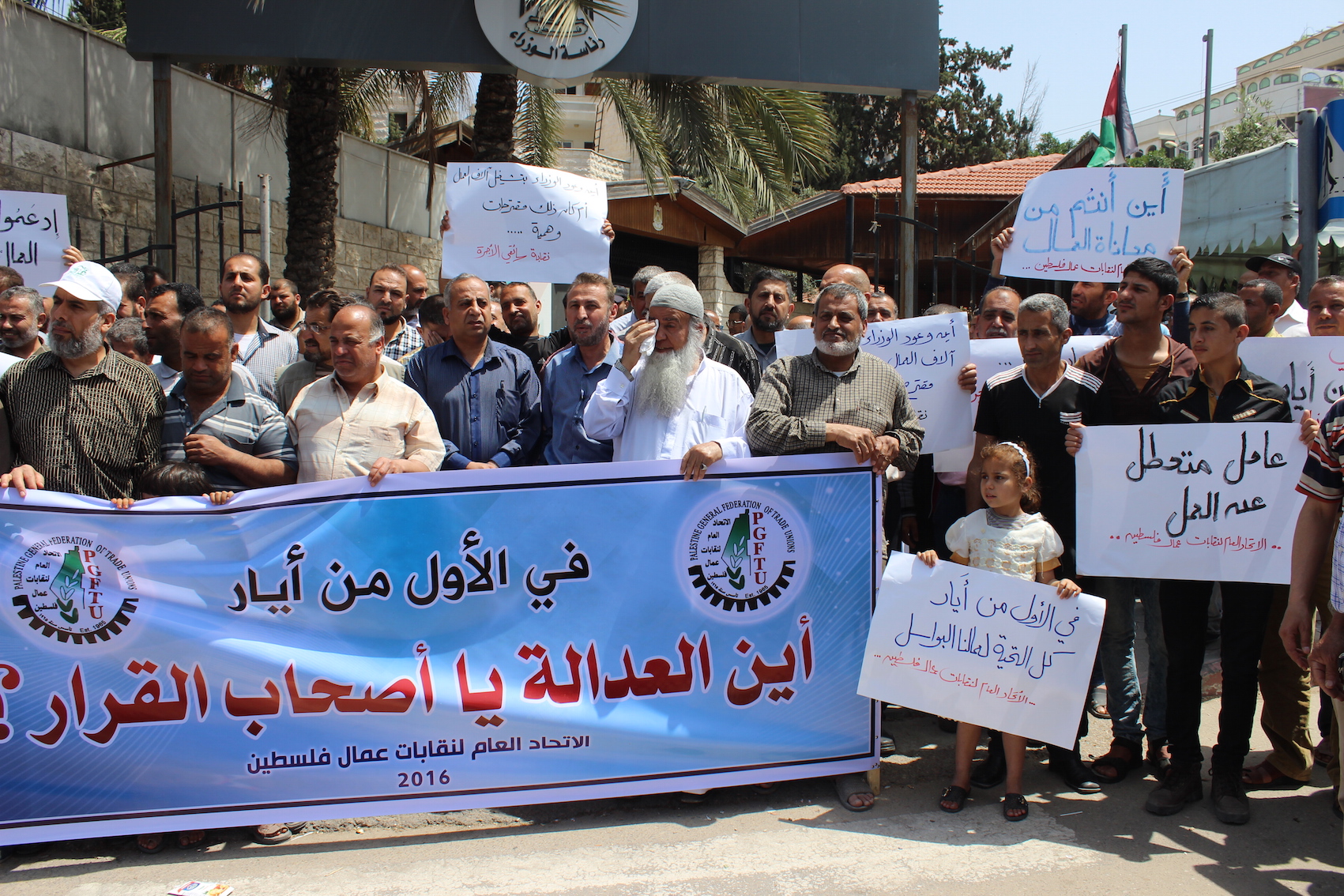Tag: Ethnic Cleansing
-
Open The Zone: municipality delegation visit to CMZ
10th May 2016 | Open The Zone Campaign | Hebron, occupied Palestine Yesterday, 9th May 2016, the Mayor of Hebron and several employees of the municipality of Hebron visited the closed military zone in Shuhada Street and the Tel Rumeida neighbourhood in the framework of the Open The Zone campaign. The delegation from the municipality…
-
Solidarity visit to Ni’lin: Killings, arrests and invasions as part of the everyday life
“There was a single Israeli army jeep that invaded the village late at night. This was very strange, as usually if the army come, they would come with 10 or more jeeps…“ This is what we were told when we visited Ni’ilin on Friday 6 May, referring to the start of the terrible Israeli incursion…
-
Labour day demonstration in Gaza trying to fight the siege
4th May 2016 | International Solidarity Movement, Gaza team | Gaza, occupied Palestine On May 1st, the workers of the Gaza Strip gathered to demand that Mahmoud Abbas and Rami Hamdallah work towards the end of the blockade. The blockade has already strangled the life in the Gaza Strip for 10 years and has raised the unemployment rate…



